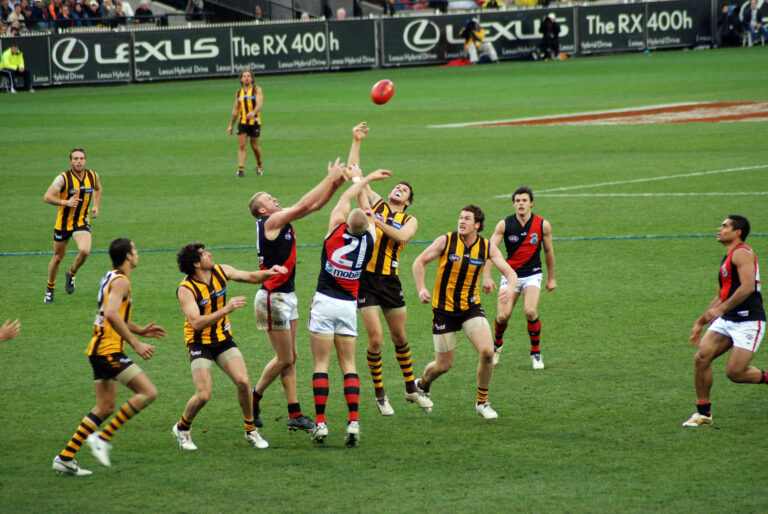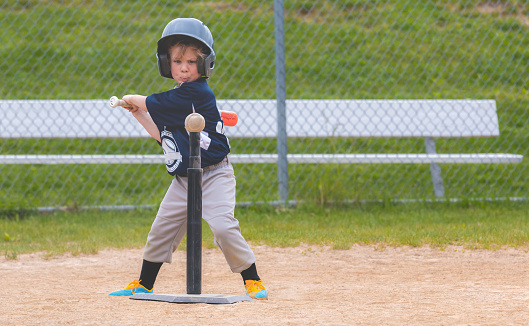General Rules of Fast Pitch Softball
You're entering the fast-paced world of fast pitch softball, where strategy and skill collide. A standard game lasts 1-2 hours, with 7 innings of play. You'll need to master the scoring rules, including the run-ahead rule and tiebreaker scenarios. The field layout, with its 220-230 feet outfield fence, is essential to understanding the game. Make sure you're equipped with the right gear, from helmets to cleats, and brush up on pitching rules and game play regulations. As you navigate the game, remember to respect your opponents, umpires, and teammates. And as you dive deeper, you'll uncover more nuances that can make all the difference in your game.
Game Length and Scheduling

As you prepare to take the field, you must understand the intricacies of game length and scheduling in fast pitch softball. Scheduling a fast pitch softball game typically involves allocating 1-2 hours for a standard 7-inning contest, depending on the age group and level of play. This timeframe can vary depending on the pace of the game, the skill level of the teams, and the tournament format. When it comes to tournament formats, you'll often find single-elimination, double-elimination, and round-robin styles. Each format has its unique challenges and requires different strategic approaches. In instances where the score is tied after seven innings, overtime strategies come into play. You'll need to be prepared to adapt your game plan to overcome the opposition in extra innings. By grasping the nuances of game length and scheduling, you'll be better equipped to navigate the complexities of fast pitch softball and make the most of your time on the field.
Scoring and Winning Conditions
As you explore the world of fast pitch softball, you'll need to understand the scoring and winning conditions that determine the outcome of a game. You'll learn that the winning score can be achieved through various scoring plays, and that a run-ahead rule may come into play in certain situations. In this section, we'll break down the specifics of game-winning scores, scoring plays, and the run-ahead rule to give you a thorough understanding of how victories are secured.
Game Winning Scores
In fast pitch softball, you're considered the winner when your team scores more runs than the opposing team at the end of seven innings, or when you're ahead by at least eight runs after five innings. This is the basic principle of scoring and winning conditions in the game. However, there are scenarios where the game requires more than just a simple score comparison. In tiebreaker scenarios, the game goes into extra innings, where the teams continue to play until one team is ahead after an inning. This can lead to momentum shifts, where a team that was behind can suddenly take the lead and gain the upper hand. To navigate the game effectively, mastering the fundamentals of scoring and winning conditions is crucial. By grasping these rules, you'll be better equipped to make strategic decisions and capitalize on scoring opportunities. Remember, the key to success in fast pitch softball lies in mastering the fundamentals of scoring and winning conditions.
Scoring Plays Only
You'll often find that scoring plays are the difference-maker in fast pitch softball, and understanding what constitutes a scoring play is vital to making informed decisions during a game. A scoring play occurs when a runner reaches home plate safely, scoring a point for their team. This can happen in various ways, including:
- A runner tagging home plate after rounding the base paths
- A runner scoring on a hit or error
- A runner advancing home on a wild pitch or passed ball
It's essential to recognize scoring plays to make strategic decisions, such as when to push runners or when to hold them back. Remember, every scoring play counts, and understanding what constitutes a scoring play can give you an edge over your opponent. By recognizing scoring opportunities, you can make informed decisions to maximize your team's chances of winning.
Run Ahead Rule
Understanding the Run Ahead Rule is essential in fast pitch softball, as it determines the winning conditions and scoring requirements in a game. You need to know when to score and how to manage your leads to take the win. The Run Ahead Rule states that if you're ahead by 10 or more runs after 4 innings (3.5 innings if you're the home team), the game is terminated, and you're declared the winner. However, if you're ahead by 8-9 runs after 5 innings (4.5 innings if you're the home team), the game continues until the end of the 7th inning.
As a player, it's vital to communicate with your base coaches to verify you're not caught leading off a base when the opposing team is about to score. Lead offs can be risky, so make sure you're aware of the score and the number of innings played. The Run Ahead Rule can profoundly impact the outcome of the game, so stay focused and adapt your strategy accordingly. By understanding this rule, you'll be better equipped to make informed decisions on the field and increase your chances of winning.
Field Layout and Dimensions

A fast pitch softball field typically measures 220-230 feet in length from home plate to the outfield fence, with varying dimensions depending on the level of play. As you step onto the field, you'll notice the layout is designed to provide a fair and exciting game for both teams. The infield dirt, a fundamental component, is usually made of a mixture of clay, sand, and silt, providing a smooth surface for players to move around.
Foul lines extend from home plate to the outfield fence, marking the boundary between fair and foul territories.
Infield dirt is a vital component of the field, providing a smooth surface for players to move around.
Outfield fence is the boundary marking the outer limits of the playing field, typically 220-230 feet from home plate.
Understanding the field layout and dimensions is essential to mastering the game of fast pitch softball. As you navigate the field, keep in mind these essential features to improve your performance and strategy.
Player Equipment and Safety
As you prepare to take the field, prioritize your safety and performance with the right equipment. You'll need to think carefully about the helmet and face mask that'll protect your head and face, the cleats that'll give you traction, and the shin guards that'll shield your legs. By selecting the right bat, you'll be able to optimize your swing and make a significant impact on the game.
Helmet and Face Masks
You'll need a helmet and face mask that meet the standards set by the Amateur Softball Association (ASA) or the National Operating Committee on Standards for Athletic Equipment (NOCSAE) to guarantee your safety while playing fast pitch softball. This is vital for protecting your head and face from wild pitches, batted balls, and other hazards on the field.
Helmet and face mask safety is paramount:
- Helmet Safety: Make certain your helmet fits snugly and is securely fastened to prevent it from shifting during play. The helmet should also have a face mask or cage attached to protect your face.
- Face Protection: The face mask or cage should be made of durable, impact-resistant material and cover the entire face, including the nose, mouth, and jaw.
- Regular Inspection: Regularly inspect your helmet and face mask for damage, cracks, or wear and tear. Replace any damaged equipment to guarantee your safety on the field.
Cleats and Shin Guards
In fast pitch softball, your footwear and shin protection are essential for peak performance and safety, so it's imperative that you wear proper cleats and shin guards during play. You'll want to choose cleats that provide stability, support, and traction on the field. Regular cleat maintenance is key to keeping them in good condition; clean them after each game and store them in a dry place to prevent damage.
When it comes to shin guards, you'll find various styles to suit your needs. Some shin guards offer additional padding for extra protection, while others prioritize flexibility and mobility. Consider your playing style and position when selecting the right shin guard for you. Regardless of the style, make sure your shin guards fit snugly and provide adequate protection for your shins. Remember, proper footwear and shin protection can greatly reduce the risk of injuries, allowing you to focus on your game. By wearing the right cleats and shin guards, you'll be able to perform at your best while staying safe on the field.
Bat Selection Criteria
Selecting the right bat is crucial to your performance, and it's essential that you consider factors like your swing style, pitch speed, and personal preferences when choosing a bat that's tailored to your game. You want a bat that complements your strengths and compensates for your weaknesses.
Some key considerations to keep in mind when selecting a bat:
- Bat Materials: Aluminum, composite, or hybrid – each material has its unique characteristics, such as weight distribution, durability, and pop.
- Grip Styles: Do you prefer a thin, tacky grip or a thicker, more cushioned one? The right grip can enhance your control and comfort at the plate.
- Length and Weight: A bat that's too long or too heavy can throw off your swing mechanics, while one that's too short or too light may lack power.
Pitching Rules and Regulations

As a fast pitch softball player, you need to understand the pitching rules and regulations to excel on the field. The pitcher must come to a complete stop in the pitching position, with both feet in contact with the pitcher's plate, before releasing the ball. This pause is essential to guarantee fairness and safety.
When it comes to the pitch count, you're allowed to throw a maximum of seven innings per game. However, if you're pitching in a tournament, the pitch count rules may vary depending on the specific tournament regulations. Make sure to check with the tournament organizers for specific guidelines.
In terms of windup style, you're free to choose your preferred method. However, keep in mind that the windup style should not distract the batter or obstruct their view. Remember, the goal is to deliver the ball quickly and fairly, allowing the batter to react accordingly. By following these pitching rules and regulations, you'll be well on your way to becoming a skilled fast pitch softball player.
Game Play and Dead Ball
During a fast pitch softball game, you'll encounter various scenarios that can temporarily halt play, resulting in a dead ball situation. These interruptions can be frustrating, but understanding the rules surrounding game interruptions and dead balls is vital for a smooth and enjoyable game.
Some key scenarios that can lead to a dead ball:
- Injuries: If a player is injured during play, the umpire will call a dead ball to provide the player with proper medical attention.
- Fan Interference: If a fan enters the field of play or interferes with the ball, the umpire will call a dead ball to maintain Ballpark Etiquette and safeguard player safety.
- Equipment Issues: If there's an issue with the ball or equipment, the umpire will call a dead ball to replace the defective item and resume play.
Umpire Decisions and Appeals

When you're playing fast pitch softball, you'll likely encounter situations where you'll question an umpire's call, and understanding the appeals process is key to resolving disputes effectively. As a player, knowing how to navigate umpire decisions and appeals is necessary to maintain a fair game.
Umpires are human, and they can make mistakes. That's why it's imperative to understand the appeals process. If you disagree with an umpire's call, you can appeal to the umpire or other game officials. However, it's necessary to do so respectfully and without arguing or harassing the umpire. Remember, umpire bias can be a concern, and it's necessary to address it objectively.
Call consistency is paramount in fast pitch softball. Umpires should aim to make consistent calls throughout the game. If you notice inconsistent calls, it's necessary to address the issue promptly. Understanding the appeals process can help you resolve disputes effectively and maintain a fair game for all players. Remember to stay calm, respectful, and objective when appealing an umpire's decision.
Conduct and Sportsmanship
In fast pitch softball, you're expected to exhibit respectful conduct and good sportsmanship, both on and off the field, to promote a positive experience for all participants. This includes respect for teammates, opponents, umpires, and coaches. Remember, the game is about more than just winning or losing – it's about building relationships and creating a supportive environment.
Here are some key aspects of conduct and sportsmanship to keep in mind:
- Respect Opponents: Treat your opponents with kindness and respect, both during and after the game. Avoid trash talk, intimidation, and other forms of unsportsmanlike behavior.
- Team Camaraderie: Foster a positive team dynamic by supporting and encouraging your teammates. Celebrate each other's successes and offer constructive feedback to help each other improve.
- Positive Communication: Communicate respectfully and positively with umpires, coaches, and other players. Avoid arguing calls or complaining about decisions, and instead focus on playing the game with integrity and respect.
Frequently Asked Questions
Can a Player Re-Enter the Game After Being Substituted Out?
You can't re-enter a game after being substituted out, as it disrupts game strategy. Instead, consider using a designated pinch hitter or runner to maintain flexibility and maximize your team's chances of winning.
Is a Batted Ball That Hits the Ceiling a Foul Ball?
When a batted ball hits the ceiling, you'll be surprised to know that, technically, it's not a foul ball; rather, it's considered ceiling interference, resulting in a dead ball, and play is restarted with a replay of the pitch.
Can a Runner Advance to the Next Base on a Foul Ball?
When a foul ball is hit, you're stuck in a Runner's Dilemma – you can't advance to the next base, as the play is dead, and you must return to your original base, avoiding a potential out.
Are Metal Cleats Allowed in Fast Pitch Softball Games?
You think you're ready to take the field, but hold up – are you wearing the right kicks? Ironically, metal cleats, with their advanced cleat technology, are actually banned in most fast pitch softball games due to safety concerns.
Can a Coach Dispute an Umpire's Judgment Call?
When you, as a coach, disagree with an umpire's judgment call, remember that Umpire Authority is key. Maintain Coach Etiquette, prioritizing Game Integrity. Follow Dispute Protocol to address concerns, avoiding confrontations that disrupt the flow.






